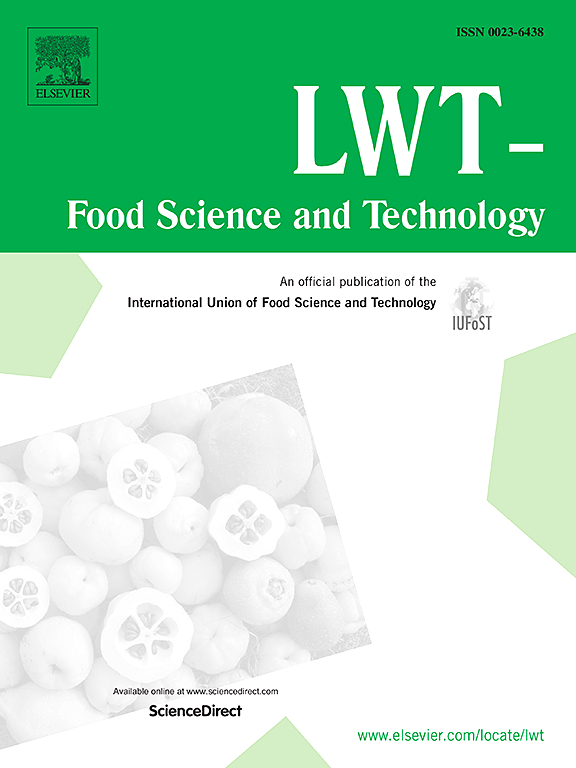Production of oleogels from cellulose and starch cryogels: Morphological, thermal, mechanical, and viscoelastic properties
IF 6
1区 农林科学
Q1 FOOD SCIENCE & TECHNOLOGY
引用次数: 0
Abstract
Oleogelation offers a way to reduce trans fats and saturated fats in foods by structuring liquid oils. This study explores cryogels derived from cotton cellulose and potato starch as templates for soybean oleogel production. Cryogels were prepared using a freeze-drying method with cellulose and starch in various mass ratios (pure cellulose, pure starch, 20 cellulose/80 starch, 20 starch/80 cellulose, and 50 starch/50 cellulose) and then evaluated for mechanical and rheological properties. Composite cryogels provided enhanced mechanical strength, thermal stability, and oil retention, with pure cellulose cryogels achieving the highest oil absorption capacity (179.42 g/g). While adding starch reduced oil absorption, retention remained significant (18.95–55.59 g/g), with a 50/50 starch-cellulose blend exhibiting optimal oil retention (81.54 %). Rheological assessments showed shear-thinning behavior in all oleogels, with low-frequency dynamic tests revealing a solid-like, elastic response. The storage modulus (G′) increased with cellulose content, reaching 7 × 10⁴ Pa, indicating robust elastic characteristics. The loss modulus (G″) results suggested larger fiber structures and increased collisional interactions with higher cellulose. These oleogels displayed a predominantly solid-like behavior at low frequencies, reflecting the effective structuring of oils through an oil sorption mechanism. This technique highlights cellulose-starch cryogels as viable oleogel templates for structuring edible oils.
求助全文
约1分钟内获得全文
求助全文
来源期刊

LWT - Food Science and Technology
工程技术-食品科技
CiteScore
11.80
自引率
6.70%
发文量
1724
审稿时长
65 days
期刊介绍:
LWT - Food Science and Technology is an international journal that publishes innovative papers in the fields of food chemistry, biochemistry, microbiology, technology and nutrition. The work described should be innovative either in the approach or in the methods used. The significance of the results either for the science community or for the food industry must also be specified. Contributions written in English are welcomed in the form of review articles, short reviews, research papers, and research notes. Papers featuring animal trials and cell cultures are outside the scope of the journal and will not be considered for publication.
 求助内容:
求助内容: 应助结果提醒方式:
应助结果提醒方式:


